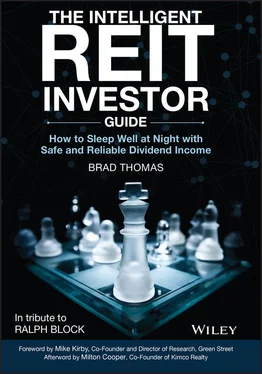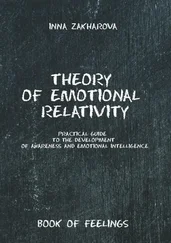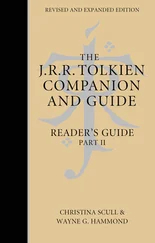Plus, there were two new designations for REITs to take advantage of.
In studying different REITs, you might come across the term “umbrella partnership real estate investment trust,” or UPREIT. It's a corporate structure that allows management to offer operating property units (OPUs) in exchange for purchases instead of cold, hard cash. This gives the seller the opportunity to still benefit from the property without the associated hassle, and the REIT the opportunity to better maintain its expenses.
The UPREIT concept, which was first implemented in 1992 by creative investment bankers, means that the REIT itself might not own any properties directly. What it does own is a controlling interest in a limited partnership that, in turn, owns the real estate. Its fellow partners could easily include management and private investors who had indirectly owned the properties in question before they became part of a REIT portfolio.
Owners of the limited partnership units have the right to convert them into shares, to vote as if they already own shares, and to receive the same dividends too. In short, they enjoy virtually the same attributes of ownership as public shareholders.
DownREITs, meanwhile, are actually structured similarly but are usually formed after the REIT becomes a public company. And members of management aren't usually going to be limited partners in the controlled partnership.
Both corporate structures can exchange OPUs for interests in other real estate partnerships that own properties the REIT wants to acquire. That enables sellers to defer capital gains taxes and have a more diversified form of investment. And that, in turn, can give UPREITs and DownREITs a competitive edge over a regular REIT when it comes to making deals with tax‐sensitive sellers.
One negative aspect about them, though, is how they open the door to potential conflicts of interest. After all, management can own units in the partnership, which usually have a low‐cost basis. The sale of a property could therefore trigger taxable income to them – but not to the actual REIT's shareholders. This can make management reluctant to sell a property – or even the REIT itself – despite its not performing well or receiving a generous offer.
REIT Modernization Act, RIDEA, and Capital Recycling
REITs’ average total returns fluctuated significantly in the 1990s after that initial bear market, going from low single‐digits to 35.3% right up until 1998 and 1999. That was when they experienced their first consecutive down years since 1973 and 1974, at 17.5% and 4.6%, respectively. Part of those falls related to overenthusiasm in 1996 and 1997, including from speculators who cashed out and moved on to the dot‐com craze.
There were also too many REITs entering the market and/or raising money all at the same time. In fact, the total raised between 1997 and mostly early 1998 was $54.2 billion. That amounted to 69% of the equity market cap of all equity REITs as of the end of 1996. Not to mention that the entire industry's value in this regard was less than that of Microsoft.
In addition, many REITs pursued aggressive acquisition strategies from 1995 to 1997, often relying heavily on short‐term debt and what Ralph Block called “exotic hedging techniques.” As should have been expected, they overextended themselves, helping lead to what became known as the Great REIT Pie‐Eating Contest. That wasn't a compliment.
Still, the decade didn't end on a bad note, thanks to the REIT Modernization Act (RMA) signed by President Clinton in December 1999. This enables every REIT organization to form and own a taxable REIT subsidiary, or TRS. By owning up to 100% of one, a REIT can develop and quickly sell properties while providing substantial services to its property tenants without jeopardizing its legal standing – a major issue in the past.
This law also greatly expanded what and how much a REIT can engage in, such as offering concierge services to apartment tenants, investing in “merchant” property development, and engaging in other real estate–related businesses. The TRS can also form joint ventures (JVs) with other parties to provide additional services.
However, certain limitations do apply. For example, no more than 25% of a REIT's gross assets can consist of TRS securities. Originally, it was 20%, though that changed with the REIT Investment Diversification and Empowerment Act of 2007 (RIDEA). Loan and rental transactions between a REIT and its TRS are also limited. And any transactions that aren't conducted on an arm's‐length basis incur substantial excise taxes. Plus, income from the TRS is subject to taxes at regular corporate income rates.
Another area the RMA affected was restrictions on hotel and lodging REITs concerning the leasing of properties to a “captive” or controlled subsidiary. They're now allowed to do so, provided that each TRS‐held property is operated by an outside manager or independent contractor. This way, they can capture more of the economic benefits of ownership for their shareholders. And Nareit suggests there are several other benefits involved in the legislation. These include better quality control over the services offered, since they can now be delivered directly by the REIT's controlled subsidiary. Plus, the sector now has an opening to earn substantial nonrental revenues as well.
As for RIDEA, almost all of its provisions were incorporated into the Housing and Economic Recovery Act of 2008 signed by President Bush. It provides REITs with more certainty and flexibility relating to the purchase and sale of assets … the size of the TRS relative to a REIT's total assets … and overseas investments and foreign currencies. It also expands the flexibility that hotel and lodging REITs enjoy in leasing properties to a TRS to their healthcare associates as well.
These laws have opened up a new range of tools for the sector to utilize. However, any tool can be used wisely or carelessly toward a positive outcome or a pointless one. So far, the value of the TRS asset in particular is still subject to debate. Many early ventures – especially with respect to technology and internet investments in the late 1990s – have been failures.
Prior to the Great Recession, TRS activities performed well such as developing new properties, leasing them up, and selling them. However, complexity risks did evolve when REITs with “conglomerate‐like” platforms invested in areas outside of their areas of expertise.
Another important change that came out of the 1998–1999 bear market was capital recycling. Since REITs had less of an ability to raise equity capital to fuel purchases and acquisitions, they turned to making that kind of money through sales instead. In so doing, they changed an entire mindset. In the past, selling properties was seen as a sign of failure: of something going very, very wrong. Yet it's become much more commonplace in the last two decades, and that's a very big deal. This allows management teams to create value for themselves and shareholders in a whole new way, giving REITs much more control over their ups and downs (see Figure 3.1).

Figure 3.1
Source: Nareit.
The 21st Century (So Far)
Every bear market leads to a bull market eventually, and every bull market leads to a bear market. Moreover, one sector suffering will often lead to another's rise and vice versa. So it's not surprising that the highly speculative dot‐com bubble bursting would send despondent investors back into safer stocks like REITs. That renewed interest in value investing brought REITs to levels they had never experienced before … right up until the next bubble burst. And that one was directly tied to housing.
Читать дальше













